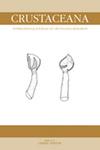西非贝宁南部nokou湖虾类分布模式
IF 0.7
4区 生物学
Q4 MARINE & FRESHWATER BIOLOGY
引用次数: 0
摘要
这项工作的目的是为了有效地管理渔业,评价诺库姆萨-科托努湖水道综合区内虾类的时空分布。在该区北、南、东、中、西5个站点1年的采样结果显示:北方对虾73.68%、大臂沼虾13.81%、大菱角沼虾5.36%、单目对虾2.68%、菲利沼虾2.20%、角角沼虾1.72%、沙里溪沼虾0.27%、马尾沼虾0.27%。M. cf. zariquieyi和M. equidens从未在贝宁报告过,但现在在nokou本文章由计算机程序翻译,如有差异,请以英文原文为准。
Distribution model of shrimp species in Lake Nokoué, southern Benin, West Africa
The aim of this work was to evaluate the spatial and temporal distribution of shrimp species in the Lake Nokoué-Cotonou Channel complex for an efficient management of the fishery. The results of one year sampling from five stations (North, South, East, Central and West) in the complex revealed the following proportions: Penaeus notialis 73.68%, Macrobrachium macrobrachion 13.81%, Macrobrachium vollenhovenii 5.36%, Penaeus monodon 2.68%, Macrobrachium felicinum 2.20%, Penaeus kerathurus 1.72%, Macrobrachium cf. zariquieyi 0.27%, and Macrobrachium equidens 0.27%. The species M. cf. zariquieyi and M. equidens were never reported from Benin, but are now found in Lake Nokoué. Spatially, Penaeus (Penaeus notialis) are more abundant in the west (Acadja concentration zone), while Macrobrachium (Macrobrachium macrobrachion) are more dominant in the east (near the Ouémé entrance) and north (near the Sô entrance) of the lake. Penaeus are strongly present in the lagoon complex from January to August, while Macrobrachium are more abundant in Lake Nokoué from September to December. Spearman’s correlation analysis revealed that increasing salinity, pH, transparency and total dissolved solids (TDS) positively influenced the abundance of P. notialis, while increasing salinity, pH, transparency, and TDS negatively influenced the abundance of M. macrobrachion at the 5% significance level. For an efficient management of the shrimp fishery, it is desirable that the shrimp fishery in Lake Nokoué, mainly in the Cotonou Channel, which is a very sensitive area for their seasonal migrations, benefits from at least three months of respite per year, from November to January. This period corresponds to the strong migration of juvenile Penaeus towards the lake. This should allow many Penaeus to grow up and breed at least once in their lives, according to the species’ life cycle presented.
求助全文
通过发布文献求助,成功后即可免费获取论文全文。
去求助
来源期刊

Crustaceana
生物-海洋与淡水生物学
CiteScore
1.30
自引率
33.30%
发文量
52
审稿时长
3 months
期刊介绍:
Crustaceana is a leading journal in the world on crustacean research, including the latest papers from all branches of zoology. It provides up-to-date information on aspects such as taxonomy, zoogeography, ecology, physiology, anatomy, genetics, palaeontology, and biometry, and covers all groups of Crustacea. Boasting a large international circulation, Crustaceana provides its readers with an abstract for each article.
 求助内容:
求助内容: 应助结果提醒方式:
应助结果提醒方式:


